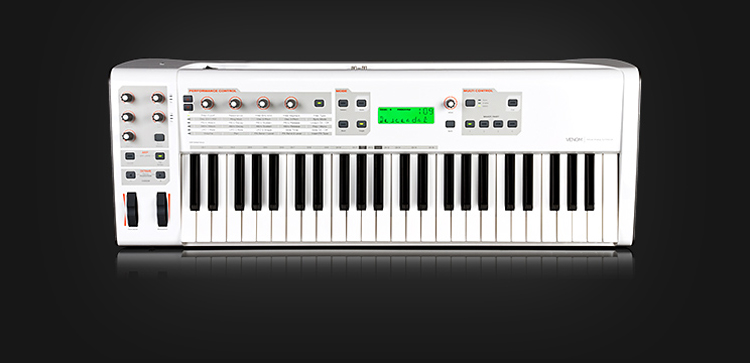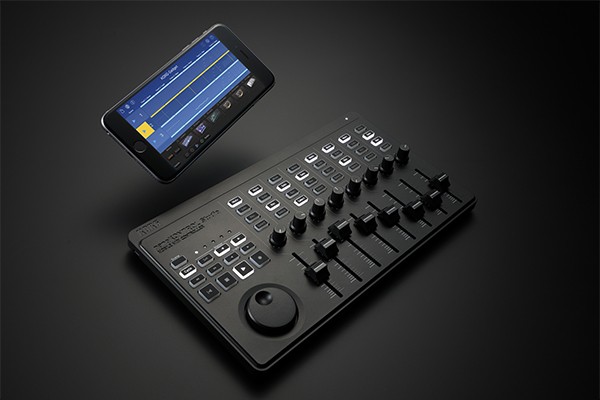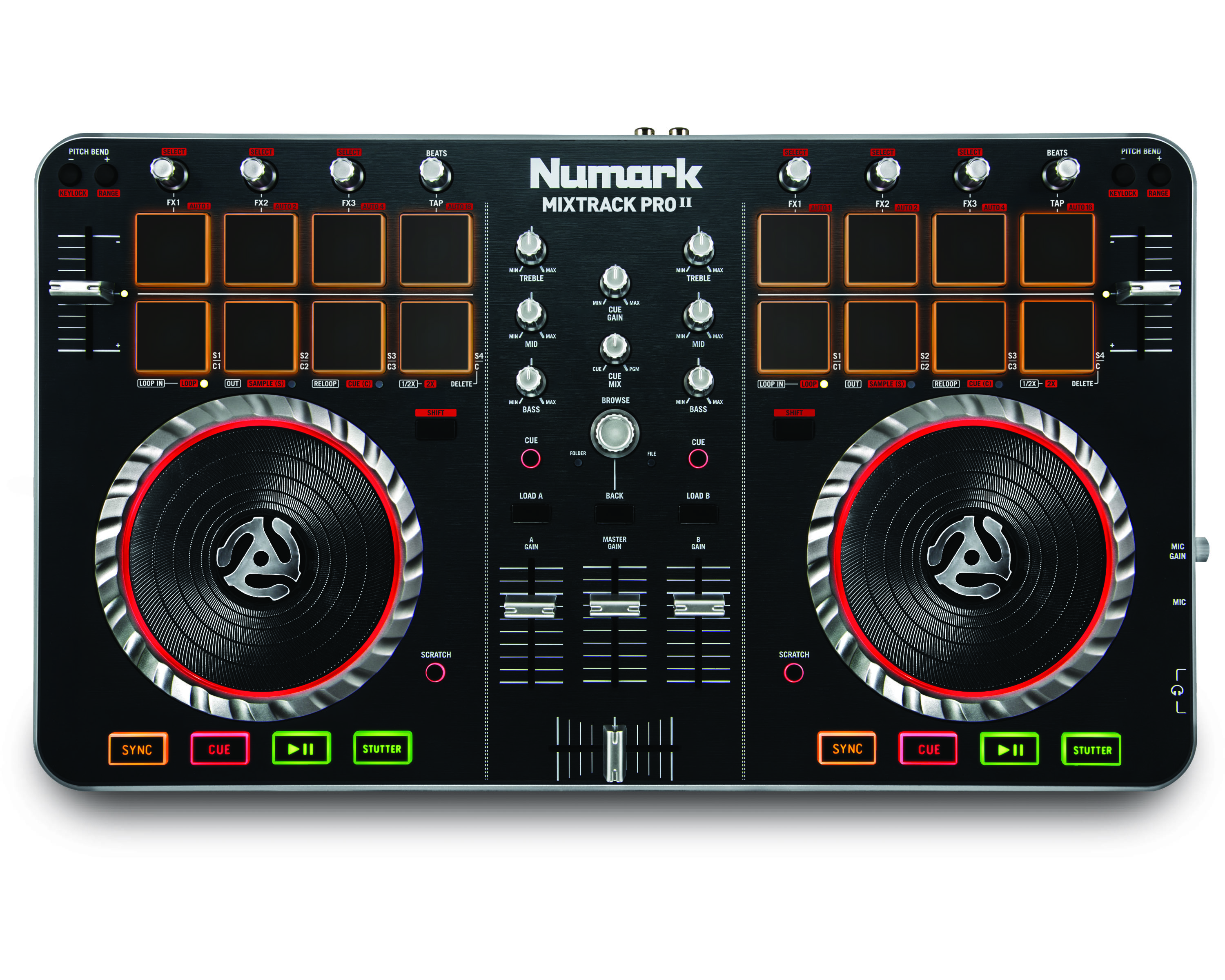- Install Midi Drivers Mac
- Korg Usb Midi Driver For Mac
- Usb Midi Driver Windows 10
- Casio Usb Midi Driver For Mac
This guide covers basic troubleshooting steps to determine whether your USB MIDI device is recognized, and working properly on a Mac computer.
- Testing to see if a MIDI device is recognized on Mac
Testing to see if a MIDI device is recognized on Mac
: Compatible (Installation of special driver not required.): Compatible, with some limitations.: Not compatible.1 Both the IN and OUT devices may be displayed during MIDI device selection with the MIDI application software. Select the appropriate IN/OUT device names. Mistakenly selecting 'IN' for an OUT device or 'OUT' for an IN device when using SMF Converter will cause the 'The MIDI device. In the Audio MIDI Setup app on your Mac, choose Window Show MIDI Studio. In the MIDI Studio window, click the Choose MIDI Configuration pop-up menu (it may show Default), then choose New Configuration. Enter a name for the new configuration, then click OK. To add a new external MIDI device, click the Add button in the MIDI Studio toolbar. KORG USB-MIDI Driver/KORG USB-MIDI Driver (for Windows 8.1) 1.15 r38 2020.08.28 / EXE: 6.3MB. Midi usb free download - MOTU USB MIDI Driver & ClockWorks, USB Audio ASIO driver, IOXperts USB WebCam Driver, and many more programs. Mio is a 1 in 1 out USB 16 channel MIDI interface to connect your MIDI compatible controller, keyboard, synthesizer, or drum machine to your computer. Mio is USB bus powered and is plug and play compatible with Windows and Mac computers.
- Open Spotlight by pressing Command + Spacebar, or clicking the magnifying glass in the top right corner of your desktop.
- Type in Audio MIDI Setup.
Best video recording app for mac.
- Hit Enter or select Audio MIDI Setup from the list.
- Two windows should open the Audio Devices, and MIDI Studio.
- If not click on Window at the top and make sure MIDI Studio is checked.
- With the MIDI Studio window open, plug in your USB/MIDI keyboard or controller. Once the device is plugged in and recognized it will appear in the window as solid. If the device is grayed out it is currently unavailable. If your device is not listed or grayed out you may want to try a different USB cable and or USB port.
In the example above you can see that the Numark USB Audio Device is plugged in and recognized. The Keystation Mini 32 is either not plugged in or not recognized.
Testing to see if MIDI devices are transmitting data using MIDI Monitor
What is MIDI Monitor?
Midi Monitor is a free utility for Mac OS X which displays MIDI signals in a variety of formats. It can watch both incoming and outgoing MIDI streams, and can filter them by message type and channel. Musicians will find it handy for tracking down confusing MIDI problems. Programmers can use it to test MIDI drivers and applications. MIDI Monitor is free to download and use.
- Download, and Install MIDI Monitor.
- Download
- Open Midi Monitor.
- Click on the Sources tab to view MIDI devices. Confirm that your USB/MIDI device is listed.
- Once you confirm your MIDI device is connected and listed. Play any key(s) on your keyboard/controller to confirm each button or key is sending data to your computer. If you device is working you will see a message with data like below. The device is not sending data you may have a hardware issue. Contact the hardware manufacture for further support.
?
What to do if your MIDI device is not connecting to your Mac
Often, after an update or migration, you will need to 'refresh' certain MIDI devices. This is done quickly and easily in your Mac's Audio MIDI Setup.
- On your Mac, navigate to Utilities>Audio MIDI Setup
- Go to Window>Show MIDI Studio
- Make sure your MIDI device is unplugged
- After you've unplugged your MIDI device, click on it and choose Remove Device
- Plug your MIDI device back into your computer
If the above steps do NOT resolve your issue..


- Empty the contents of the following two folders by moving their files into to two new folders on your desktop:
Macintosh HD > Library > Audio > MIDI Drivers
Macintosh HD > Users > [Your User Name] > Library > Audio > MIDI Drivers
Note: the second location above is hidden on Mac OS X 10.7 and above. To access it see these instructions.
- These are the places where third-party MIDI drivers are stored. If they have become corrupt, or they haven't been installed correctly, removing them and starting over may help.
- Restart your computer.
- Try your MIDI device again.
- If the symptom has been resolved, you should..
- Reinstall each of these drivers by visiting the home page for the respective device manufacturers. Note, if your MIDI device is Class Compliant, it doesn't require any extra drivers to be installed.
- Find and download the latest drivers for the product(s), and install them.
- Confirm all of your devices now work properly, then trash the files you had moved from your MIDI Drivers folder to your desktop.
Also see..
Audio MIDI Setup User Guide
If you use MIDI devices or a MIDI interface connected to your Mac, you can use Audio MIDI Setup to describe the configuration of your MIDI devices. There's a default configuration already created, but you can set up your own.
You can use this configuration information for apps that work with MIDI, such as sequencers, to control your MIDI devices.
Note: Make sure your MIDI devices are connected to your Mac. If you're using an interface device, connect any other MIDI devices you're using to the interface. Also check that any software provided by the manufacturer of the MIDI devices has been installed. For more information, see the documentation that came with your devices.
View a MIDI configuration
In the Audio MIDI Setup app on your Mac, choose Window > Show MIDI Studio.
In the MIDI Studio window, click the Choose MIDI Configuration pop-up menu (it may show Default), then choose the configuration you want to view.
In the toolbar, click the following buttons to change how the configuration is shown:
Hierarchical View : Devices in the configuration are shown as icons. If a device isn't connected, its icon is dimmed. To view information about a device, such as channel properties and ports, and to add or remove ports, double-click the device's icon.
List View : Devices in the configuration are shown in a list, organized by type (such as Interface or External Device). If a device isn't connected, it's dimmed. To filter which devices are shown, click the Show pop-up menu, then choose an option (such as Online or Connected). To view information about a device, double-click the device. To view its ports, or to connect or disconnect devices, click the device's disclosure triangle.
Create a MIDI configuration
Install Midi Drivers Mac
In the Audio MIDI Setup app on your Mac, choose Window > Show MIDI Studio.
In the MIDI Studio window, click the Choose MIDI Configuration pop-up menu (it may show Default), then choose New Configuration.
Enter a name for the new configuration, then click OK.
To add a new external MIDI device, click the Add button in the MIDI Studio toolbar.
To set properties and add or remove ports for the MIDI device, double-click the device, or select it, then click the Device Info button in the toolbar.
In the Properties window, do any of the following:
Describe the device: Enter a name for the MIDI device; the name appears in apps you use with the device. If you know the manufacturer and model, you can enter those.
The Sims 2 update for Mac fully updates any previous version of The Sims 2 to version 1.0 Rev F. This patch provides universal support for Sims 2 and provides fixes for several minor issues. Note that users of Mac OS X 10.3.9 should eject the The Sims 2 game DVD before installing this update. Mod the sims 2 for mac. The Sims 2 Mac is the Mac edition of the sequel to the smash-hit game that puts the player in charge of a virtual community. It takes the concept of the original title and adds new elements that will enhance the experience all around. What kind of gameplay does The Sims 2 Mac have?
Change the device icon: Click the MIDI device's icon to open the Icon Browser, select a different icon to represent the device, then click the new icon to close the Icon Browser.
Change the device color: Click the color well, select a different color to use for the MIDI device, then close the Colors window.
Set the device channels and other properties: Click Properties, then click the channels to use for transmitting and receiving audio. To deselect a channel, click it again. Also select whether to use the MIDI Beat Clock, the MIDI Time Code, or both, then select other features.
Add or remove ports: Click Ports, click the Add button below the list of ports, then specify the MIDI In and MIDI Out connectors for the port. To delete a port, select it in the list, then click the Remove button .
Select MIDI-CI profiles for interface devices: If an interface device supports MIDI-CI, click MIDI-CI to see the profiles available on each channel. To turn a profile on or off, select or deselect its checkbox.
Click Apply.
Repeat steps 4 through 7 for each MIDI device you want to include in the configuration.
In the MIDI Studio window, specify the connection between MIDI devices:
In Hierarchical View , drag the In or Out connectors at the top of a device icon to the corresponding connector on another device icon.
In List View , click a device's disclosure triangle, click the Port disclosure triangle, click the Add Connection icon, then use the pop-up menus to specify the connections.
If you have a MIDI interface connected to the USB port on your Mac, it should appear in the MIDI Studio window. If it doesn't, see If a connected MIDI device isn't shown.
You can't specify a 'MIDI thru' connection between two MIDI devices. To indicate a MIDI thru connection, connect the two MIDI devices to the same port of the MIDI interface device.
Korg Usb Midi Driver For Mac
Edit a MIDI configuration
Usb Midi Driver Windows 10

Casio Usb Midi Driver For Mac
In the Audio MIDI Setup app on your Mac, choose Window > Show MIDI Studio.
In the MIDI Studio window, click the Choose MIDI Configuration pop-up menu (it may show Default), then choose Edit Configurations.
Mac need for speed underground 2 gepigeny. Select a configuration, then click Duplicate, Rename, or Delete.
When you're finished making changes, click Done.

- Empty the contents of the following two folders by moving their files into to two new folders on your desktop:
Macintosh HD > Library > Audio > MIDI Drivers
Macintosh HD > Users > [Your User Name] > Library > Audio > MIDI Drivers
Note: the second location above is hidden on Mac OS X 10.7 and above. To access it see these instructions.
- These are the places where third-party MIDI drivers are stored. If they have become corrupt, or they haven't been installed correctly, removing them and starting over may help.
- Restart your computer.
- Try your MIDI device again.
- If the symptom has been resolved, you should..
- Reinstall each of these drivers by visiting the home page for the respective device manufacturers. Note, if your MIDI device is Class Compliant, it doesn't require any extra drivers to be installed.
- Find and download the latest drivers for the product(s), and install them.
- Confirm all of your devices now work properly, then trash the files you had moved from your MIDI Drivers folder to your desktop.
Also see..
Audio MIDI Setup User Guide
If you use MIDI devices or a MIDI interface connected to your Mac, you can use Audio MIDI Setup to describe the configuration of your MIDI devices. There's a default configuration already created, but you can set up your own.
You can use this configuration information for apps that work with MIDI, such as sequencers, to control your MIDI devices.
Note: Make sure your MIDI devices are connected to your Mac. If you're using an interface device, connect any other MIDI devices you're using to the interface. Also check that any software provided by the manufacturer of the MIDI devices has been installed. For more information, see the documentation that came with your devices.
View a MIDI configuration
In the Audio MIDI Setup app on your Mac, choose Window > Show MIDI Studio.
In the MIDI Studio window, click the Choose MIDI Configuration pop-up menu (it may show Default), then choose the configuration you want to view.
In the toolbar, click the following buttons to change how the configuration is shown:
Hierarchical View : Devices in the configuration are shown as icons. If a device isn't connected, its icon is dimmed. To view information about a device, such as channel properties and ports, and to add or remove ports, double-click the device's icon.
List View : Devices in the configuration are shown in a list, organized by type (such as Interface or External Device). If a device isn't connected, it's dimmed. To filter which devices are shown, click the Show pop-up menu, then choose an option (such as Online or Connected). To view information about a device, double-click the device. To view its ports, or to connect or disconnect devices, click the device's disclosure triangle.
Create a MIDI configuration
Install Midi Drivers Mac
In the Audio MIDI Setup app on your Mac, choose Window > Show MIDI Studio.
In the MIDI Studio window, click the Choose MIDI Configuration pop-up menu (it may show Default), then choose New Configuration.
Enter a name for the new configuration, then click OK.
To add a new external MIDI device, click the Add button in the MIDI Studio toolbar.
To set properties and add or remove ports for the MIDI device, double-click the device, or select it, then click the Device Info button in the toolbar.
In the Properties window, do any of the following:
Describe the device: Enter a name for the MIDI device; the name appears in apps you use with the device. If you know the manufacturer and model, you can enter those.
The Sims 2 update for Mac fully updates any previous version of The Sims 2 to version 1.0 Rev F. This patch provides universal support for Sims 2 and provides fixes for several minor issues. Note that users of Mac OS X 10.3.9 should eject the The Sims 2 game DVD before installing this update. Mod the sims 2 for mac. The Sims 2 Mac is the Mac edition of the sequel to the smash-hit game that puts the player in charge of a virtual community. It takes the concept of the original title and adds new elements that will enhance the experience all around. What kind of gameplay does The Sims 2 Mac have?
Change the device icon: Click the MIDI device's icon to open the Icon Browser, select a different icon to represent the device, then click the new icon to close the Icon Browser.
Change the device color: Click the color well, select a different color to use for the MIDI device, then close the Colors window.
Set the device channels and other properties: Click Properties, then click the channels to use for transmitting and receiving audio. To deselect a channel, click it again. Also select whether to use the MIDI Beat Clock, the MIDI Time Code, or both, then select other features.
Add or remove ports: Click Ports, click the Add button below the list of ports, then specify the MIDI In and MIDI Out connectors for the port. To delete a port, select it in the list, then click the Remove button .
Select MIDI-CI profiles for interface devices: If an interface device supports MIDI-CI, click MIDI-CI to see the profiles available on each channel. To turn a profile on or off, select or deselect its checkbox.
Click Apply.
Repeat steps 4 through 7 for each MIDI device you want to include in the configuration.
In the MIDI Studio window, specify the connection between MIDI devices:
In Hierarchical View , drag the In or Out connectors at the top of a device icon to the corresponding connector on another device icon.
In List View , click a device's disclosure triangle, click the Port disclosure triangle, click the Add Connection icon, then use the pop-up menus to specify the connections.
If you have a MIDI interface connected to the USB port on your Mac, it should appear in the MIDI Studio window. If it doesn't, see If a connected MIDI device isn't shown.
You can't specify a 'MIDI thru' connection between two MIDI devices. To indicate a MIDI thru connection, connect the two MIDI devices to the same port of the MIDI interface device.
Korg Usb Midi Driver For Mac
Edit a MIDI configuration
Usb Midi Driver Windows 10
Casio Usb Midi Driver For Mac
In the Audio MIDI Setup app on your Mac, choose Window > Show MIDI Studio.
In the MIDI Studio window, click the Choose MIDI Configuration pop-up menu (it may show Default), then choose Edit Configurations.
Mac need for speed underground 2 gepigeny. Select a configuration, then click Duplicate, Rename, or Delete.
When you're finished making changes, click Done.
